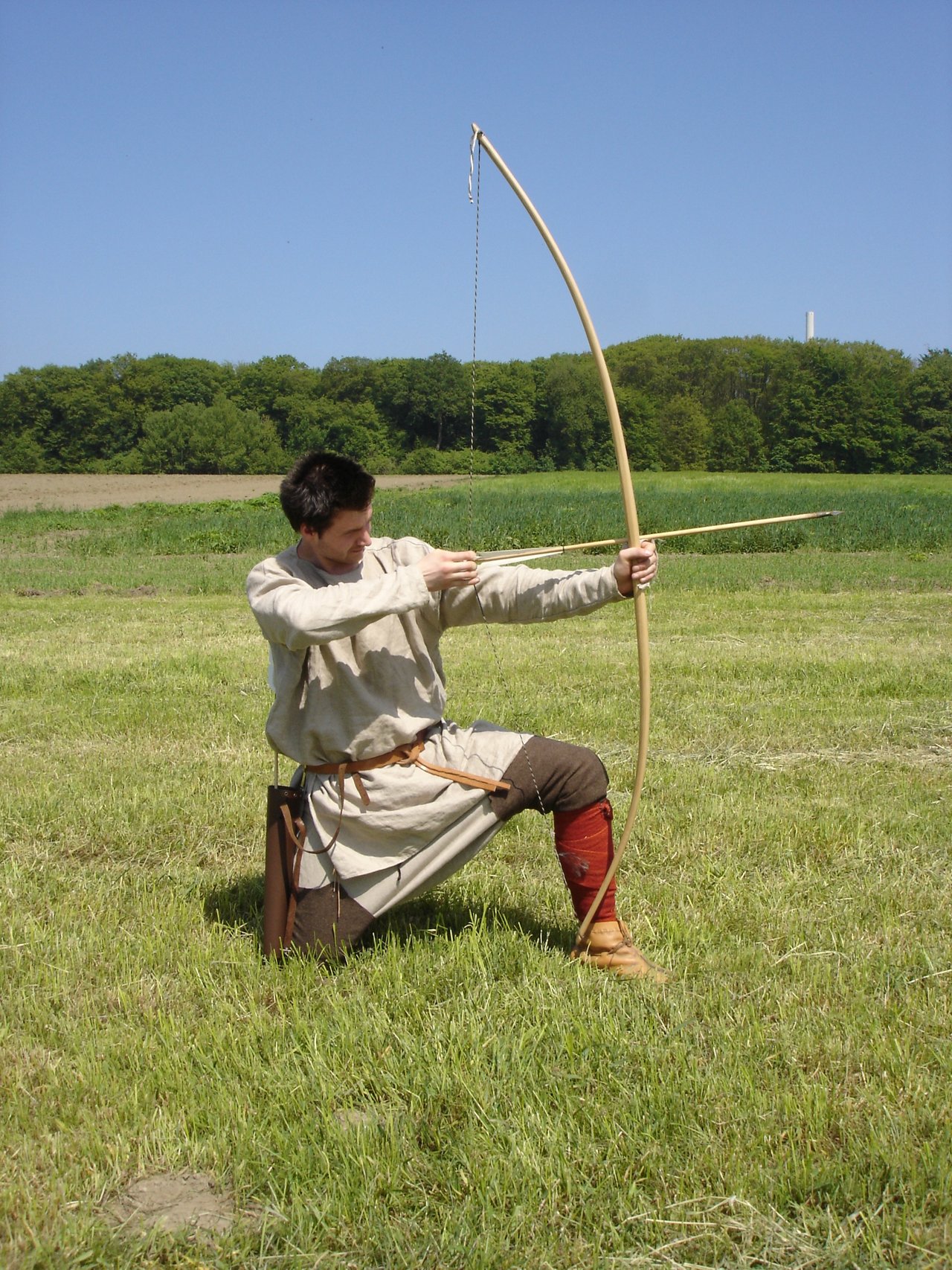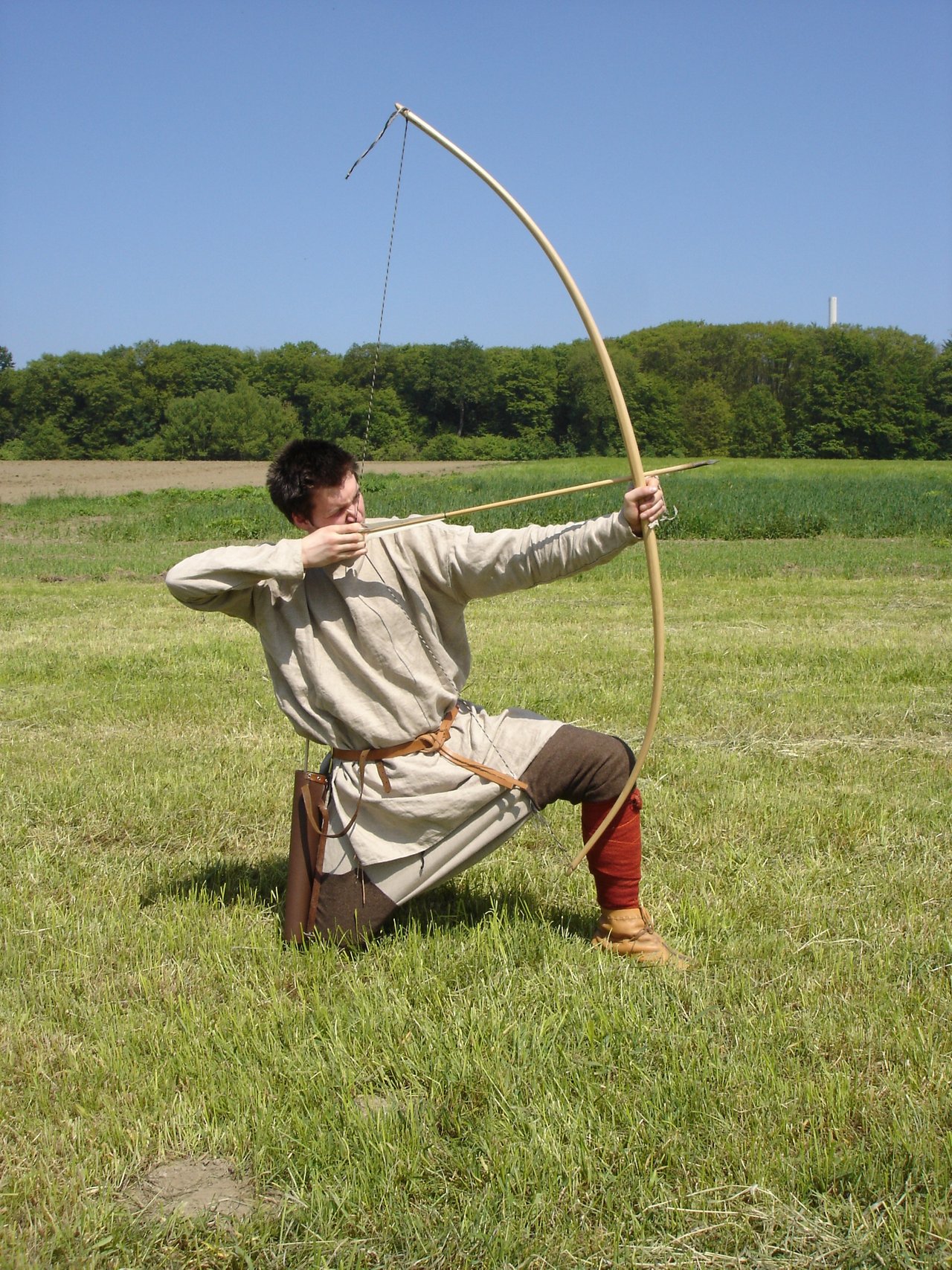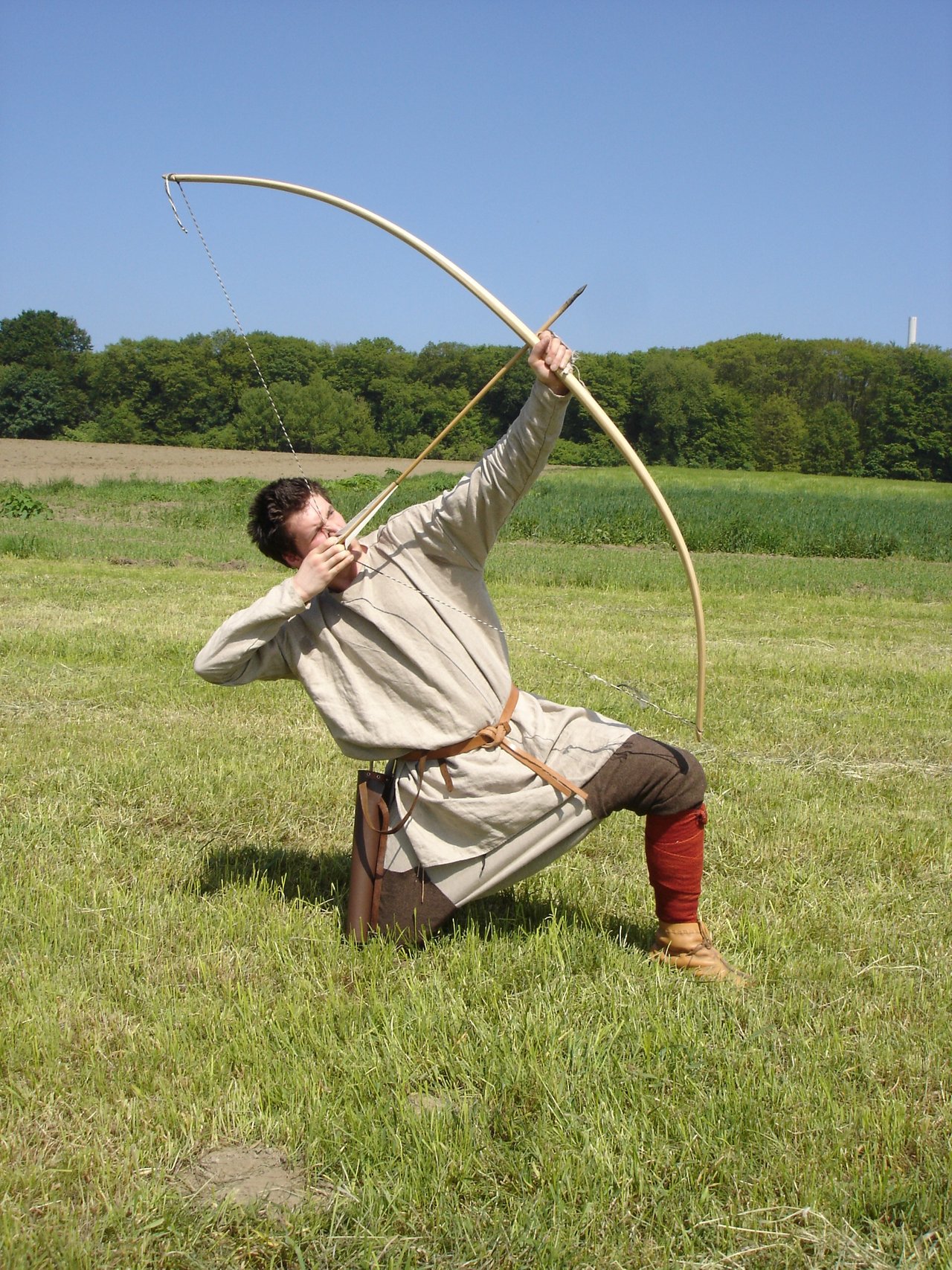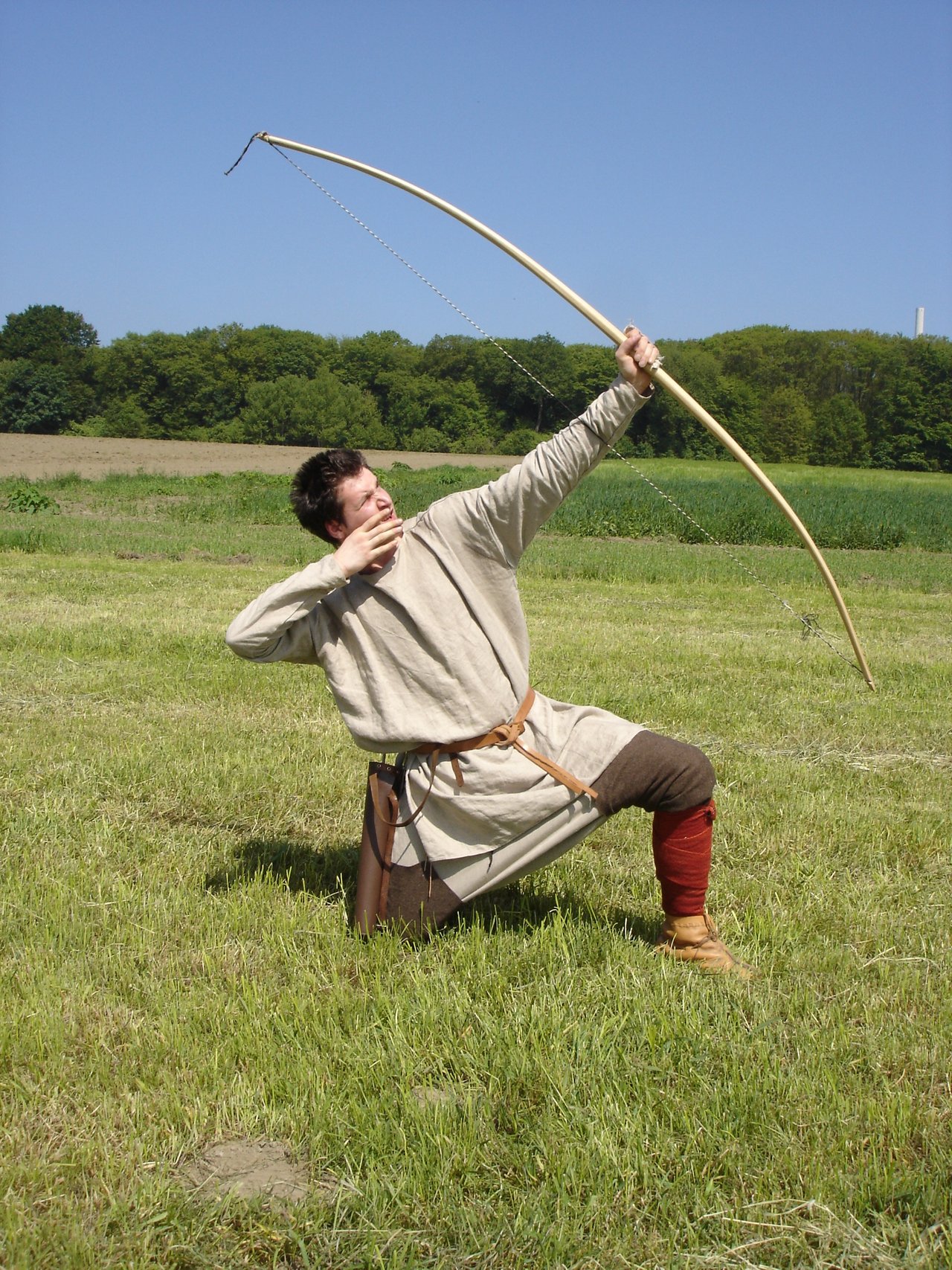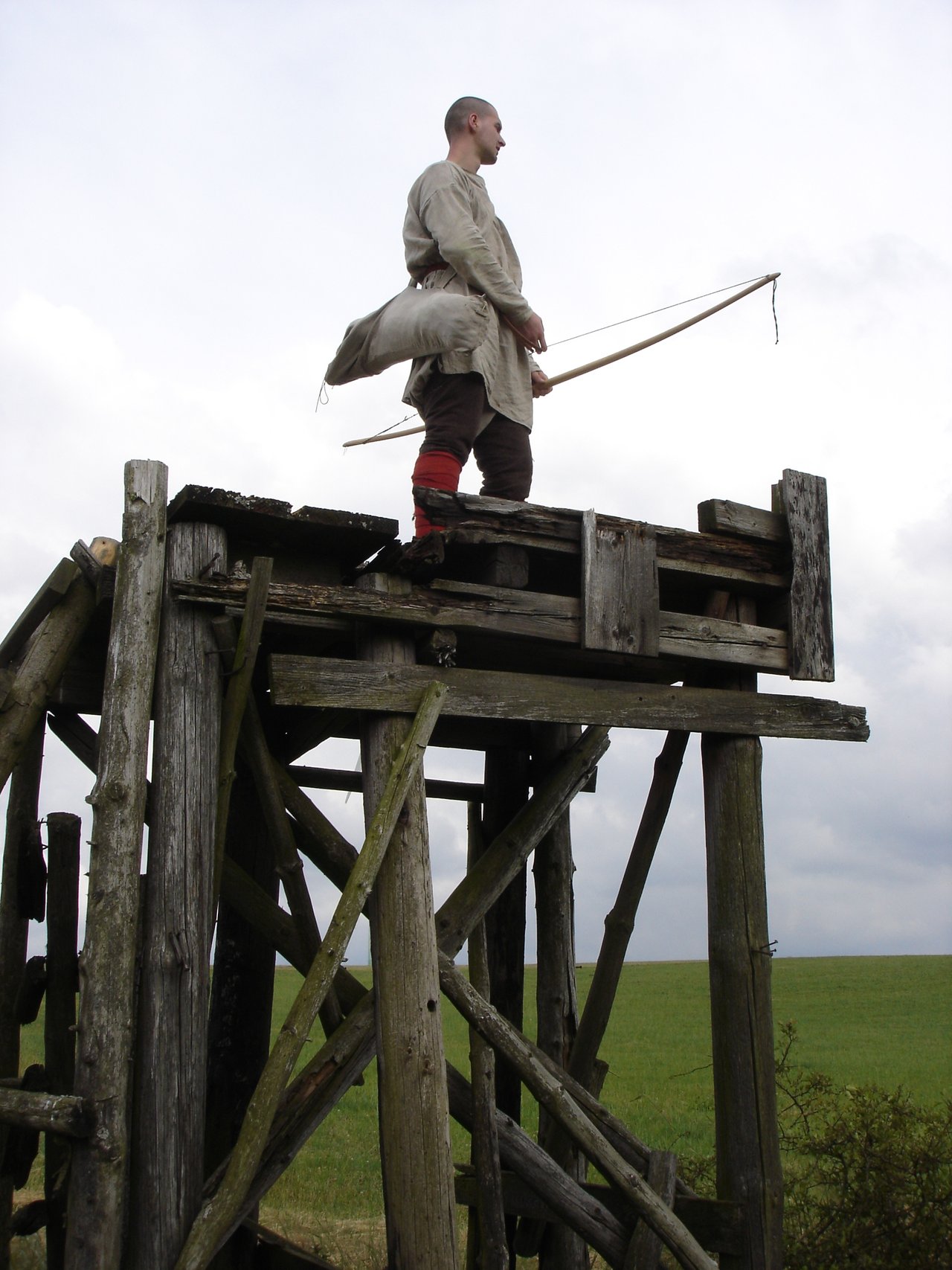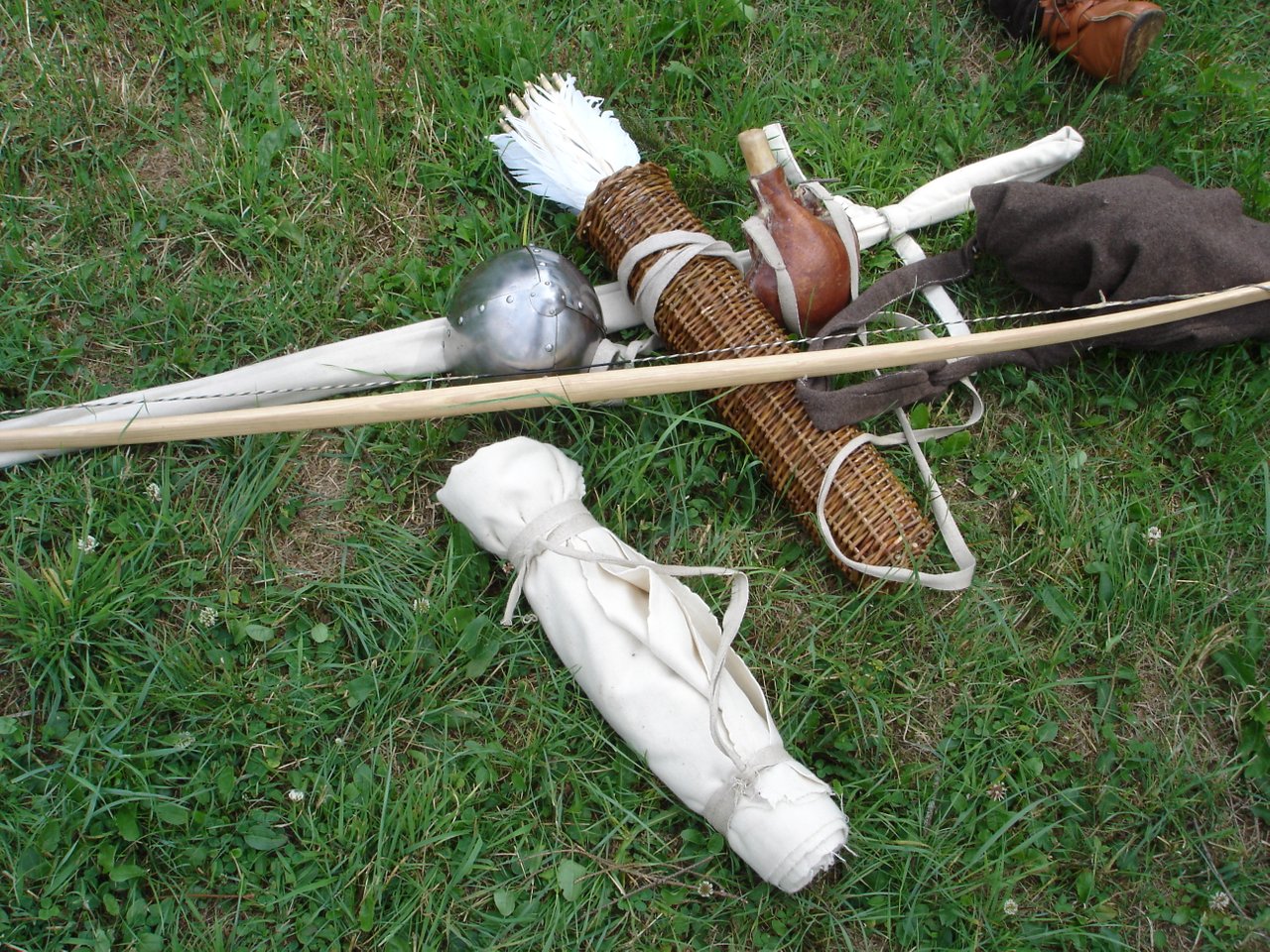Hello lovely Steemians !
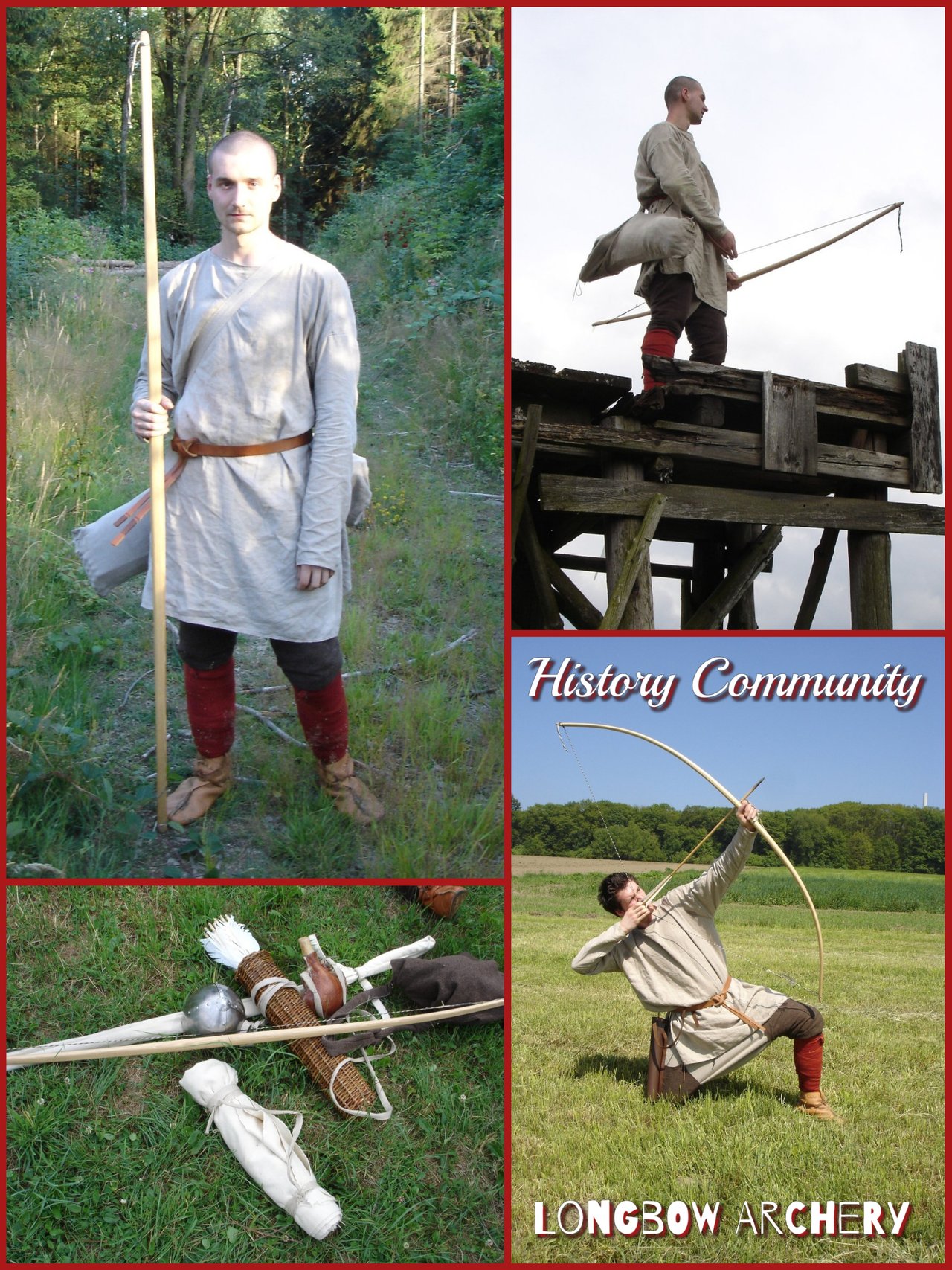
History Community :
Today I want feature the new History Community to. I recently came across a Steemian by the name of @oo7harv. He is from England, relatively new to the platform, and very interested into history, especially into classical greek history. His post are really amazing and highly informative, also extremely well researched, and a pleasure to read for any history-lover out there. Unfortunately there was never to many great posts or interest in history here on Steem. We were talking a bit and now he formed the History Community. If you are interested please join in here. This for sure can grow into an fantastic one and help to bond all those history fanatics together that are spread all over the blockchain, me included 😜
This post here is dedicated to the History Community and I hope to catch some attraction to it this way.
My Interest in Archery :
I was always loving history. It is so stuffed with amazing stories about intrigues, epic battles and wars, crusades and far more that is so much better than any possible novel or nowadays also TV-series could ever write up. Mainly because it is all true 😁 I could also write a lot now about how repeatable it can be and how you can use it as a warning, but this is another topic, hahaha 🤣 .. Instead I looked on my older pictures to create a post for introducing the History Community and also to directly feature it with a nice topic. Since I was a young boy I was fascinated by one of humankind oldest weapon, the Longbow. From all possible ones out there this one conquered my heart. The bow is so versatile and its use as a weapon is actually peripheral as it fulfills several other more important task, like hunting for example. Then finally I fulfilled one one of my childhood dreams. I tailored my own medieval clothes and equipment and was crafting my own longbow !!!
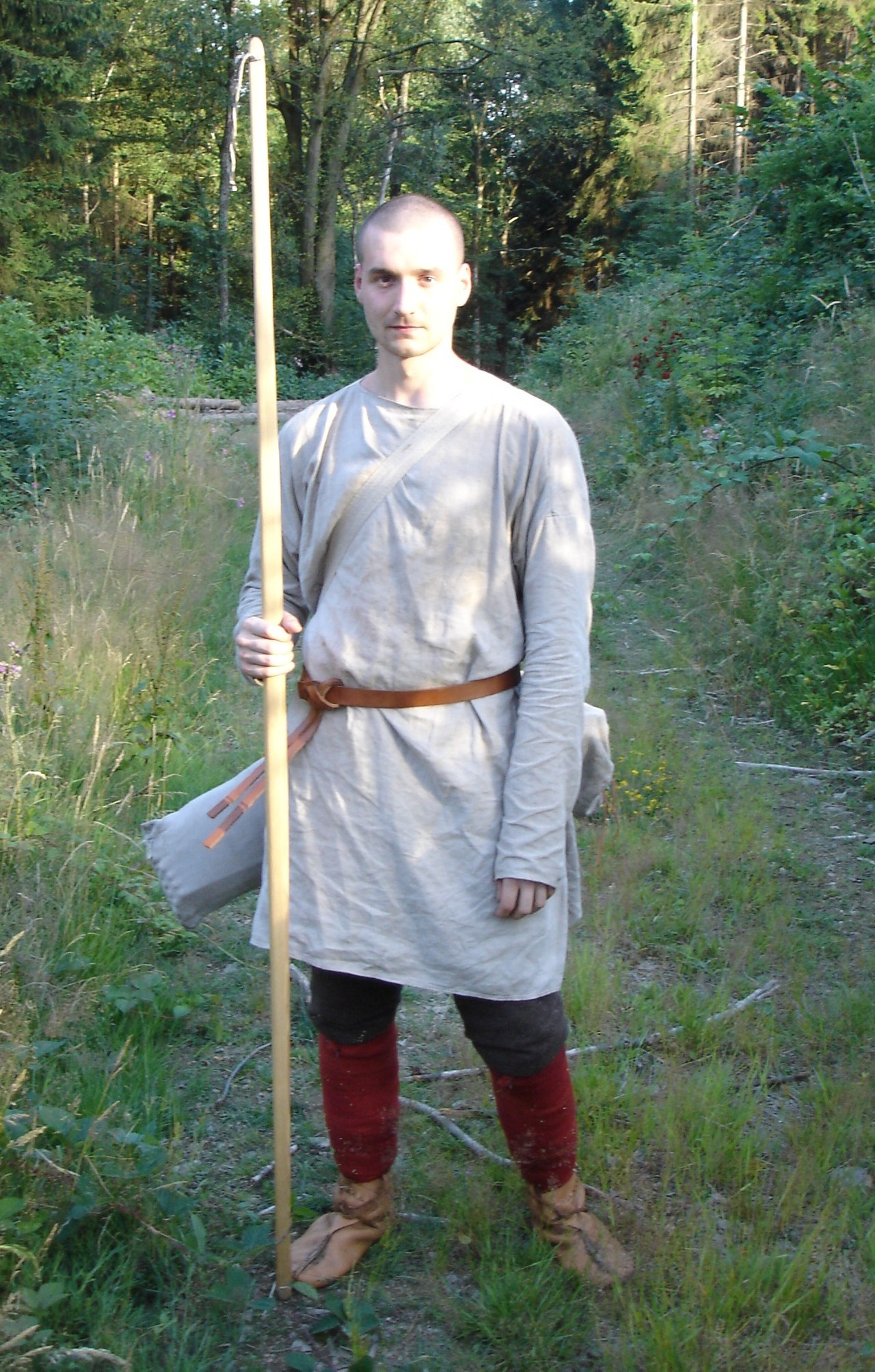
The Longbow and its Power in Medieval Times :
The first longbow was found in 1991 in the Ötztal Alps, in the State of Tyrol in southern Austria. It was around 1.80 m in length and was found beside the worlds oldest mummy Ötzi who lived between 3400 and 3100 BCE. Since then the bow can be found throughout the history in many forms and was used for various purposes, for both hunting and warfare from prehistoric times until the widespread use of gunpowder in the 16th century.
After reading several books and watching countless films about the medieval europe between the 9th and 15th century my interest in this weapon was steadily growing. In this period the bow was used in several epic battles with a tremendous successful outcome during the Hundred Years War, which consequently changed the art of war for the future. This qar was a series of conflicts from 1337 to 1453 between the House of Plantagenet, rulers of England and the french House of Valois, over the right to rule the Kingdom of France. For those who are interested I would like to mention my favorite two battles:
The Battle of Crecy in 1346 :
The Battle of Crécy took place on 26 August 1346 in north-east France between a french army commanded by King Philip VI and an english army led by King Edward III. Here the english army consisting of 11000 soldiers, half of them were longbow archers, battled against 25000 french soldiers, mainly mounted knights and crossbow archers. One would have predicted the total annihilation of the English troops but surprisingly the english army only counted far less then 1000 soldiers while the french army lost more than half of their troops !! ... that for sure hit hard 🤕
The Battle of Agincourt in 1415 :
The Battle of Agincourt took place on 25 October 1415 in northern France between a french army commanded by Charles VI and an english army led by Henry V. Here 7000 english soldiers, 6000 of them were longbow archers, battled against 30000 frensh soldiers, again mainly mounted knights.
Just think about the fact that the cost of an archer are just a wooden bow and some arrows for a simple peasant, while mounted knights have to be equipped with heavy armor, horses and are in addition a lot more expensive than a peasant. Just as a fact, all english peasants from the age of 15 were ordered by law to own a bow and train regularly. Kind of a double-edged sword ;) .. I can imagine King Henry V of England was rolling on the floor laughing after he heard that they again annihilated half of the frensh soldiers on the cost of only 300 english archers ... Baaaaam, that hit even harder 😝
How To Shoot A Longbow :
Here I want to explain to you the technique that was used to actually loose an arrow properly from a longbow. It basic consists of four steps. Aiming, Drawing, Adjusting, and Loosing.
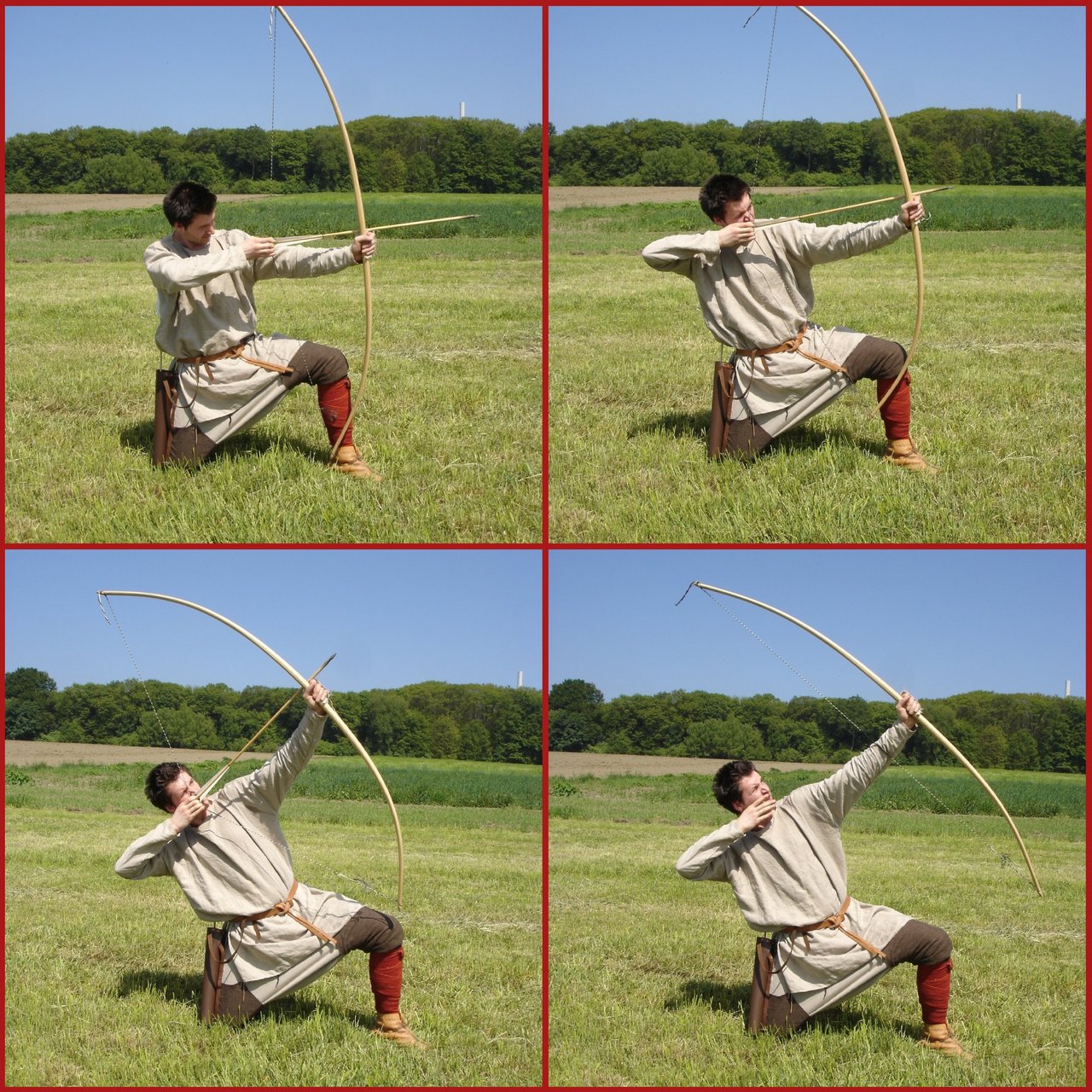
Aiming : The hand that holds the bow, my left one in this case, strongly grabs the shaft directly under the middle point of the bow, while the arrow is laid down on this "holding hand". The end of the arrow is hold between the index finger and the middle finger of the "drawing hand".
Drawing : The shoulder, elbow and hand of the "drawing arm", the right arm in this case, are forming a straight line with the nocked arrow while the two fingers of the "drawing hand" draw the arrow. The "holding arms" that holds the whole bow is slightly bend to hinder the bowstring from hitting the forearm later on. believe me, that is extremely painful after a serious of shots. The eye still fixes the target while the index finger softly touches the lip in the corner of the mouth.
Adjusting Range : To adjust the range the whole upper body together with the tensed bow lays back depending on the drawing strength of the bow, the distance to the target and the used arrow. It will take some time to get the proper feeling though.
Loose : To loose the arrow the index finger and the middle finger are simply opened. Until this is down it is important to hold the whole body tension. Also keep your eyes still at the sky for a brief second. This is actually necessary as otherwise there are slight deviations of where the arrow will fly.
Of course this can be also done while standing:
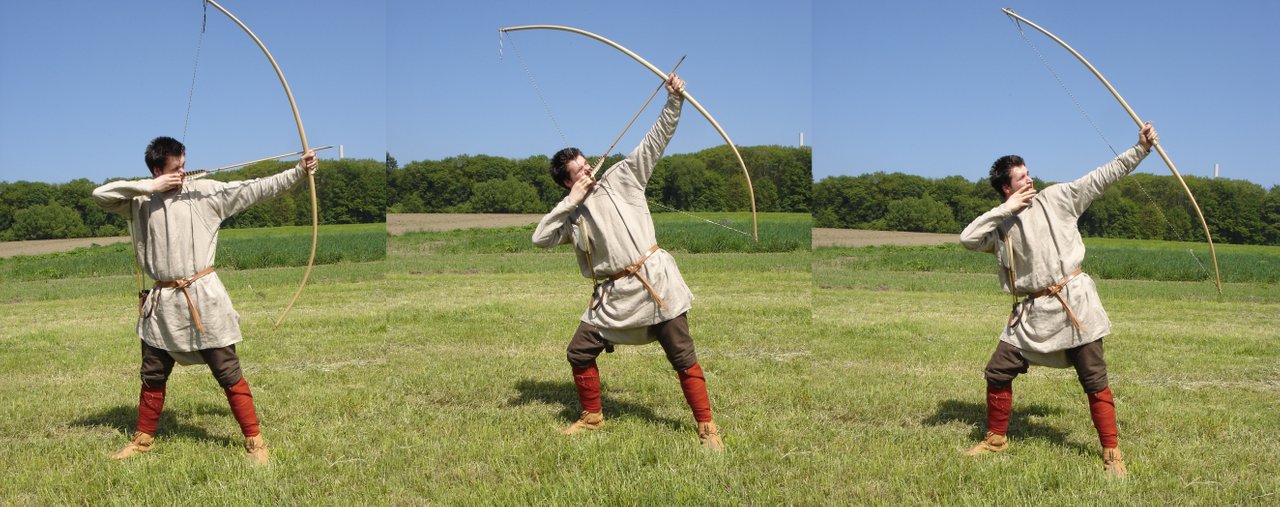
Characteristics Of The English Longbow :
The by far best and suited wood for manifacturing a longbow was definitely yew. Unfortunately the large need of yew during the medieval times led to the extinction of yew trees in most regions of Great Britain and the yew trees were put under nature protection. Another great wood for bows were ash and elm. The bow was made by a single piece of wood. The whole process of crafting a bow took more than 3 years, including drying and shaping the wood into a D-shape. The final length of such a war-bow was somewhere in the range of 1.8 m to 2 m, depending on the height of the archer and featured a drawing weight of approximately 80 Kg, which is incredibly high !! I myself have already troubles with bows of a drawing weight more than 50 Kg. For protection the bow was usually covered by beeswax and as a string usually hemp was used. Trained medieval archers were able to fire 8 arrows per minute with a range of 350 m that easily pierced heavy armored plates. Imagine 5000 archers are shooting arrows at the same time ! The sky just went dark 🙄😲
Thank You for Reading !
I thank you all for reading my little article about medieval archery and hope you enjoyed it. Here just a few more pictures for you ;)

I also hope that this is helping to populate the new History Community a bit. Just join us there and give it a try 👍
Best wishes,
Adalger
All pictures were taken by my friends from Reenactment for me. For information gathering I used several articles on Wikipedia




If you want to know more about me, just look up my Introduceyourself post or follow my blog ^^
Learn more about @adalger here !
Best wishes,
Adalger

